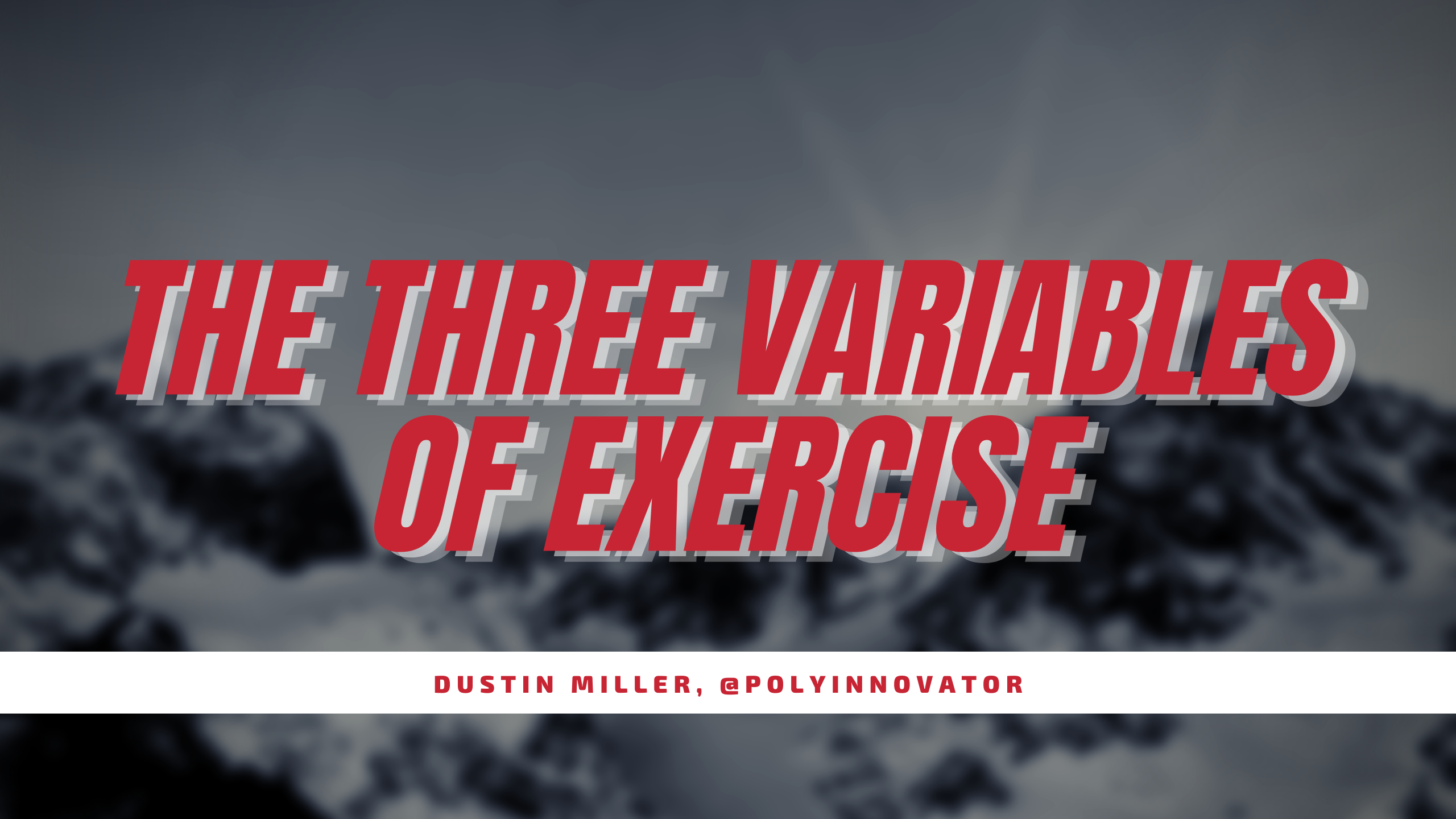These are probably the most important ideas of the gym rat world, that can help every single person, including the people who are avid exercisers.
Challenging yourself is the key to making sure that you stay on the right course. I've worked with people of ALL ages from babies barely six months, to people in their nineties. Each of them all have one thing in common, me too, we are all dying.
Exercising is not about losing weight, for it is about making more distance between you and death.
What matters most is that when you move it improves your flexibility, mobility, and longevity. These are the three variables you need to keep in mind ALWAYS when exercising. If you maximize your switching of variables on a daily, weekly, monthly, and even Yearly basis; Then you will facilitate the best course of action for yourself.
Variable 1, SPEED:
Many people know this one, as how fast you go is often the first thing people think about. When you're starting out it is best to go slow, imagine the muscles moving, and really work on form first and foremost.
However once your form gets to a good point you can experiment with faster movements. In some cases if you're able to you can go slower with lighter weights to increase challenge, or go faster with light and increase the repetitions (we'll get to that later).
Conversely, you can do heavy weight, and when you do that is gonna be one of two ways. First, you would go slow because it is hard for you to move it, or fast because you are sacrificing form just to lift the weight. Don't do that!
Fast speed, whether it is light or heavy, should only be done if your form is nearly perfect. If you go fast without great form you are bound to get hurt!
Variable 2, INTENSITY:
This one is another one most people think about: light or heavy. As I mentioned in the last section your speed changes depending on your intensity. When people go heavy they often move explosively, which is with force and often speed. Generally it is for only a handful of reps so it is usually easy enough to have good form that way. However you can do light weights at a high rep count, and that will get you to a serious intensity after a while.
People often get stuck on this variable, simply because they do not change their intensity. I've seen countless heavy lifters never touch a light weight because they think they're too good for it. To a point they are, but you need volume to maximize deep muscle strength.
I would bet many heavy lifters they could do the reps needed with light weights! ;) #challenge
I would also bet people that do light weights should try doing heavy too (have a spotter!).
Alternatively you can change the intensity by changing various factors. For curls there are four different ways of doing them by rotating your wrists, or you can do push ups at various angles, etc. Calisthenics are great for this, and often greatly support your overall strength.
Note: You CAN get ripped from just doing body weight alone, it is just you got to be creative enough. (Search the human flag).
Variable 3, VOLUME:
Finally, this one is honestly my favorite, and in which case means I often find myself changing variables one and two more. Volume stands for either repetitions or amount of time elapsed.
i.e. a plank for ONE MINUTE, or doing 60 push ups. Counting the amount of time or reps, which can get difficult when you're doing a lot!
Never underestimate the power of doing high reps. It teaches you good form (from pure quantity of practice), patience (to even finish), mind body connection, and builds your deep muscle. Having that deep layer allows you to have more endurance, and ability to push your grit for longer. All of those in turn then help you to do lower volume with heavier weight.
I always push people to go for longer or more reps because they often get stuck with the "pyramids" 6, 12, 6 or 6, 8, 12, etc. But I call those pyramid schemes.
They're useful to get you in the right mindset of hypertrophy, or in essence getting to your breaking point. Oftentimes even getting you to do that one more rep, but you get stuck at that same rep count because you "feel it" after getting to your first breaking point. However your spirit resolve only gets strengthened by getting past your second or third breaking points.
Never More Than One!…
Let me say this one more time. DO NOT do more than one at a time! That is dangerous, and you're just asking yourself to get hurt!
except........
There are some cases where you MAY combine two variables. This is of course once you have been at the exercising habit/skills for a while. You KNOW what you're doing, or have been pushing yourself for a while. Then you have a need to challenge yourself differently, and maybe you have somehow balanced all three over the past year, so that you aren't really getting the burn anymore.
There are cases where literally just once a month (maybe a quarter if you're new), that you combine two together. Like I did my heaviest bench that I had tried (not my max per se), and increased my reps dramatically. Instead of the usual 20 for that weight I did 50 reps.
Or for example my story about how I did 300 push ups that you can check out on this blog. Not only was I pushing pure reps, which was 60-80 more than my previous max, but I was feeling the intensity. You wouldn't think I would since they were traditional push ups (no fancy versions), but my arms were numb at 240 from the lactic acid, and I had fallen three times already. So every rep felt like it was like I was climbing a mountain.
I had to do 1-2 reps at a time just to get it done.
Bringing It All Together
As I said volume is often my favorite as that is what I started with because I wanted to learn proper form. Only in recent years did I start experimenting with heavier weight.
Here is my strategy for reps, and that way no matter what variable you choose to work on there is a count for you to follow.
3 | 20 | 50 | 100
Any time I do an exercise I follow that structure. When I bench I often do medium to light weight so I do super high reps 50 or 100.
When I do curls there are four kinds so I do 20 (sometimes 25) each. 80-100
This is unless I increase the weight in which case if I do heavy I'll aim for 20. Or weight isn't the only intensity, so like if I do handstand push ups against the wall I'll do 20. (Still need to get the balance for away from wall!)
If I am maxing out and really pushing myself to my limit I only do 3. Why not one you might ask? Well if you can do one, then it isn't much of a stretch to do 3, and then you have three data points to understand your progress.
All in all, they each have their usefulness, and it is negligent to ignore any of them. In some cases you may find yourself challenged by two at once, but you should never have a moment where it is all three. Challenge yourself to cycle them out, and change on a monthly or quarterly basis to stay stimulated.
![Official Website for Dustin Miller PolyInnovator [LLC]](https://polyinnovator.space/content/images/2025/03/polyinnovator-logo-2024.png)











